16-18 May
Seoul to Busan
The first class carriage on the KTX Express train to Busan was full, mostly of regular travellers immersing themselves in their mobiles and laptops. We had to ask for the sun blinds to remain open, so that we could enjoy the views of the Korean countryside.
Busan station is a huge modern station on several levels with many exits. We could see the port, and our hotel was right next to the station. After dumping our rucksacks, we took a walk to the ferry terminal to reconnoitre where we were to take the ferry to Japan from.
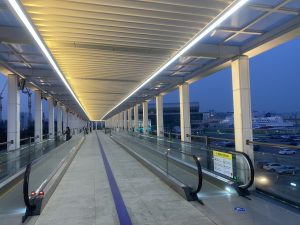
We were hoping to find one of the many eateries at the station on the way back, but garlic was proving problematic. Our last option – dinner on floor 21 of our hotel instead. No Korean food but fantastic views.
Wednesday saw us having a late morning. We spent some time battling with the Amtrak web site and app to book train and bus tickets in the US. Fortunately we realised in time that Lynne was in the process of booking tickets from Vancouver, Washington State, rather than Vancouver in Canada!
Fishy
Then off to take the metro to Jagalchi fish market, hoping for breakfast. The T-money transport cards we purchased in Seoul also work on the Busan metro. We thought we were getting the hang of travelling on the Korean metro, but got confused on descending to the platform, finding it only went one way! We hopped onto the train, despite our misgivings, and yes, we were heading in the wrong direction!
We got off at the very next station, but it was impossible to change to the other platform without going through the exit gates. So we used the red button at the Help Gate again. This time someone appeared in person and allowed us out, and back in again for the correct direction. Aha – sometimes the entrances are not directly opposite each other.
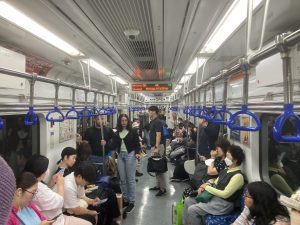
We arrived at the Jagalchi market to find fish for sale everywhere. We walked along a narrow street with “Ajummas” (older women) selling fish. Then we found a large building, with all manner of live fish on the ground floor, wriggling around, quantities of dried fish on the floor above, and the top floor with tables and chairs waiting for customers.
It was between breakfast and lunch, so pretty empty. We sat down and ordered scallops. What a veritable feast! Not only did we get twenty scallops (whole), we had cassava, an octopus kimchi pancake, winkles, sweetcorn and monkey nuts. Well some of us did.
After this challenging breakfast we approached the waterfront and found another fish market building, Jagalchi, gearing itself up to provide lunch to tourists. It was a more modern version of the Shindonga fish market we had eaten in.
Cultural Village
Our plan was to walk to the Gamcheon Cultural Village. We used the KakaoMap app and walked to a bus stop, just as a small bus arrived that we hopped on. Our luck was changing – right first time! It went exactly where we wanted it to.
The village was nestled in a valley, high up a hill. It had been transformed into an attractive, colourful, community, with much art work. Its genesis lies in being part of the peninsular still controlled by the South Korean government during the Korean war. Many refugees built temporary accommodation on the terraces there. The area deteriorated into slum conditions until its latest artistic incarnation.
We enjoyed walking up and down the narrow streets and alleyways, especially descendingthe Stairway to the Stars, so-called because the locals saw stars when they carried their heavy loads up the 148 steps!
Unfortunately the route on the map required quite a trek up the hill, in the hot sun, to catch a bus to return us to Busan Station. The bus didn’t go to the station, but the driver helpfully showed us when to alight, just by a metro station, taking us back to our hotel.
We spent some time wandering around Chinatown nearby, looking for somewhere to have dinner and failed. Then Peter had a brainwave. Off we went on the metro to Lotte department store, where we knew they would have a selection of restaurants. Straight there, no hiccups this time – except we ended up with a magnificent Japanese meal of sushi. Even Lynne surprised herself by plumping for fish again, quite so soon!
Gyeongju
We had signed up for a day long tour to Gyeongju with a local Korean tour group. This is the site of the ancient capital of the Silla Dynasty. The weather forecast was dreadful, so it was a good day to spend going north on a coach for 90 minutes and then be ferried from site to site.
We visited, Yangdong, a Hanbok village with 500-year old houses. The grander ones similar to the those we had encountered in Bukchon, but the workers’ homes had mud and thatched roofs.

Wet, but lovely village 
Coffee break
We visited Buddhist temples, Bulguksa, which started to be built in 751. At the entrance, it is stated, without irony, that: “The temple served as a center of Silla Buddhism and prayer for the protection of the country from foreign invasion. The entire temple was burnt down by Japanese invaders in 1593”. It was restored between 1969 -1973. The temples were beautifully decorated with colourful lanterns outside, but the rain was torrential.
Then off to Daereungwon Park, to admire the burial mounds of Kings. The original gold ornaments buried in the one tomb, which is now open to the public, are truly remarkable. We were let loose to grab ‘street food’ dinner on a nearby touristic street. By good fortune, we found a ‘sit down’ restaurant where Lynne enjoyed a famous local dish, potato and cream cheese, served shaped like a pancake, the only item on the menu without garlic.

King’s Mound 
Burial Remains 
Ancient Trade 
Local Delicacy
Lastly, as dusk set in, we visited the extensive Donggung Palace, where three buildings have been reconstructed. At 7.20pm exactly, the palace buildings, grounds and lake were beautifully lit up.
A long, very wet day, but a good use of one of our very few rainy days.
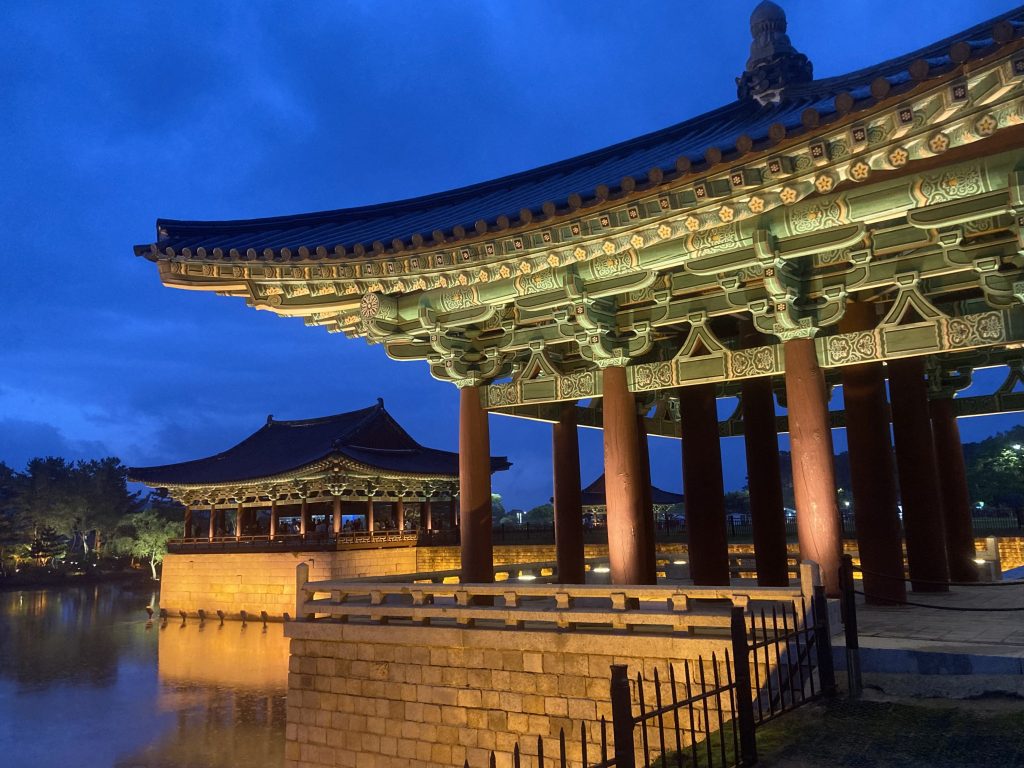
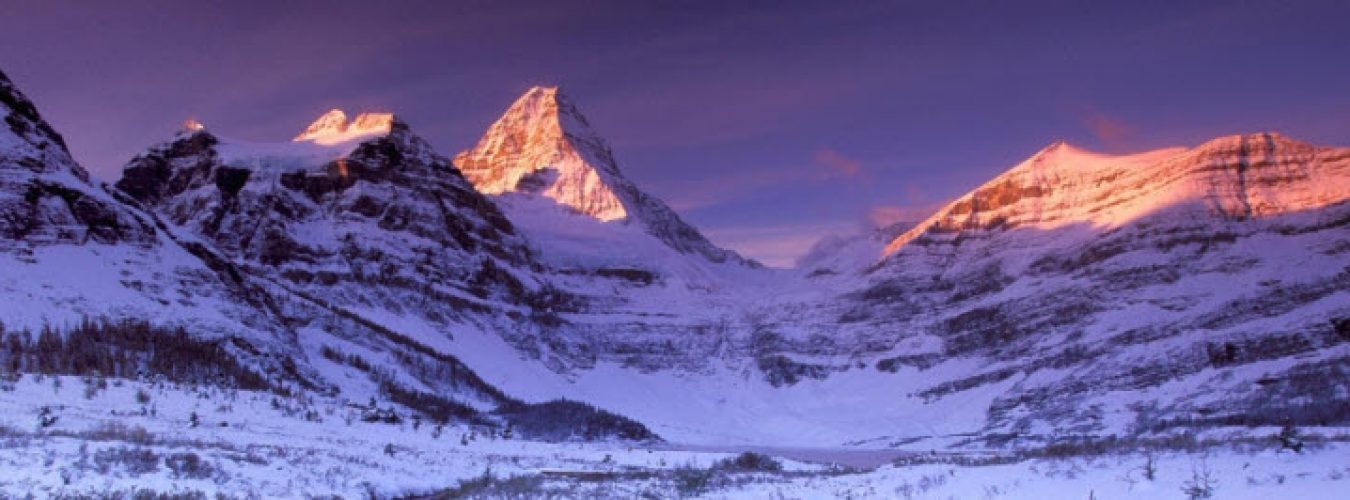
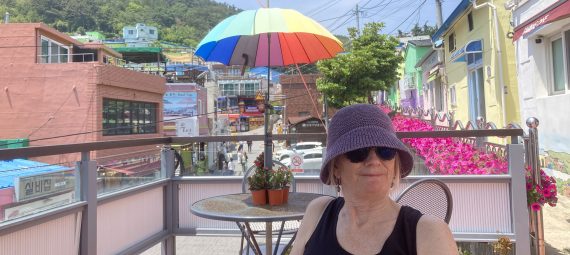
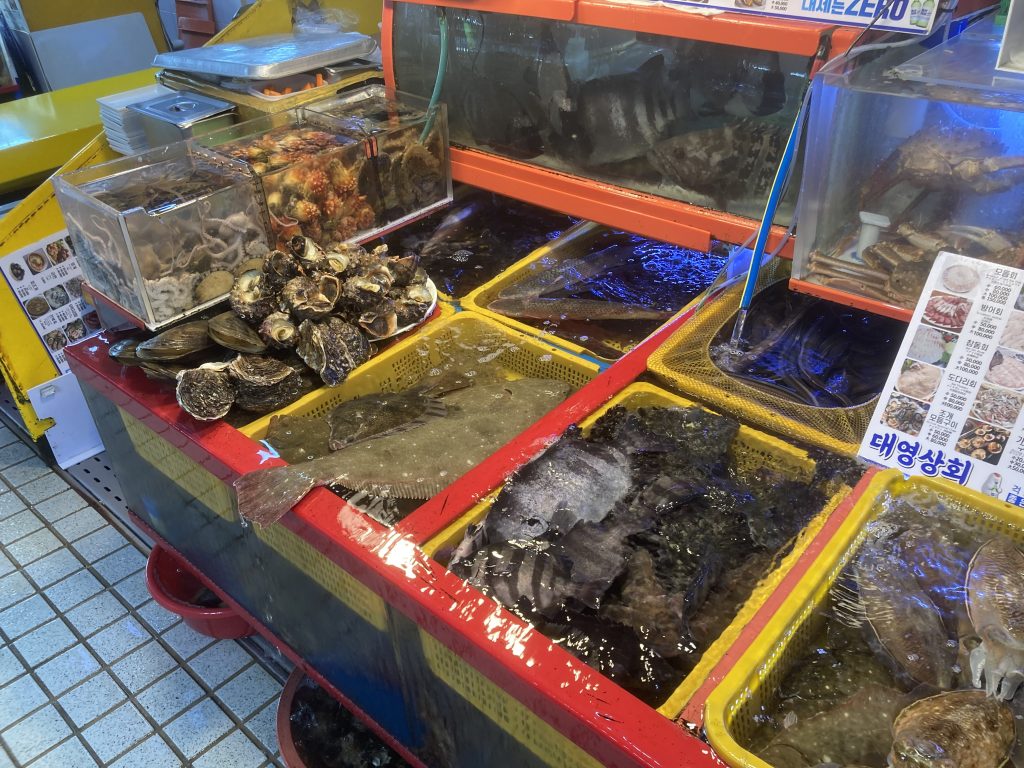
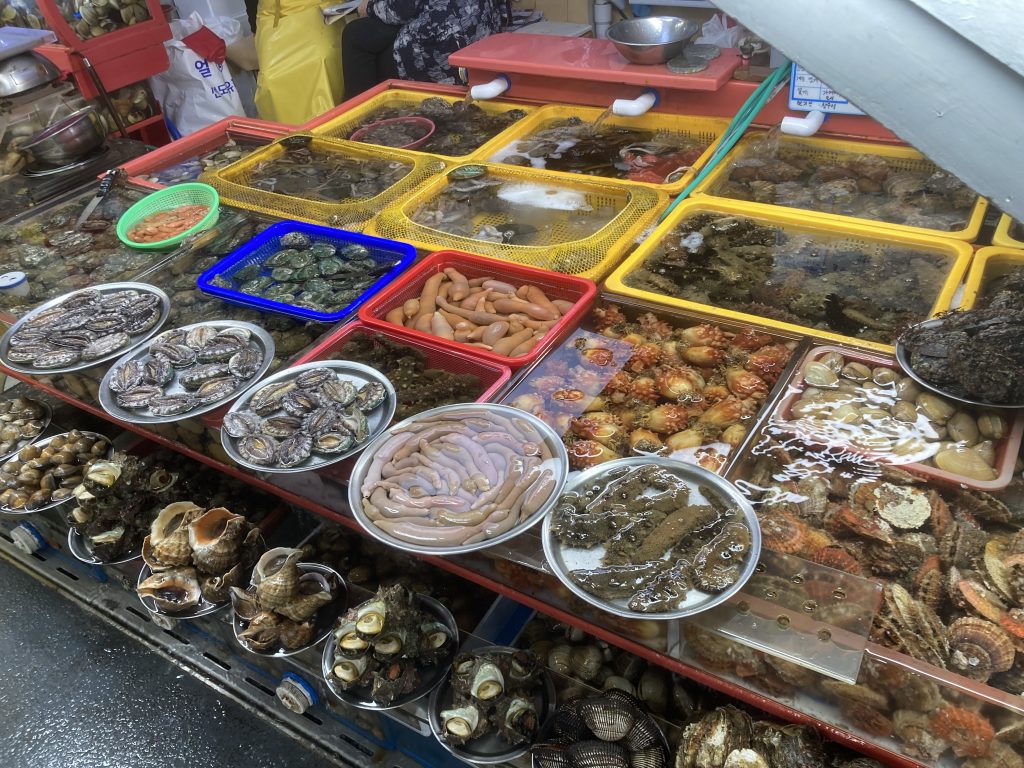
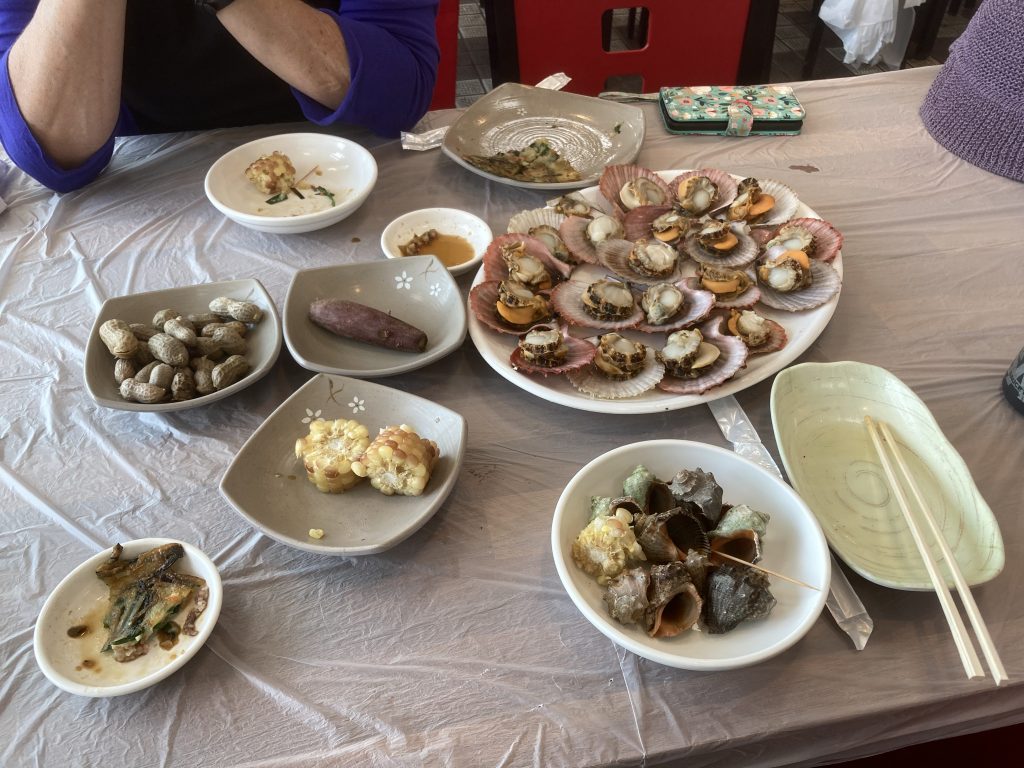
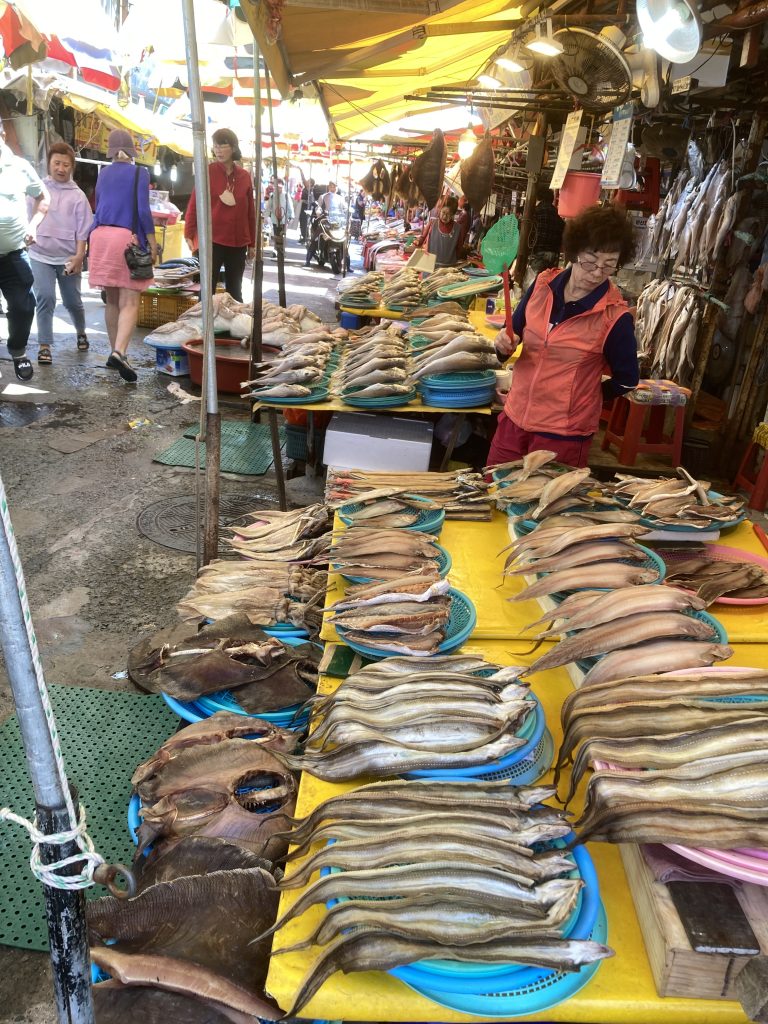
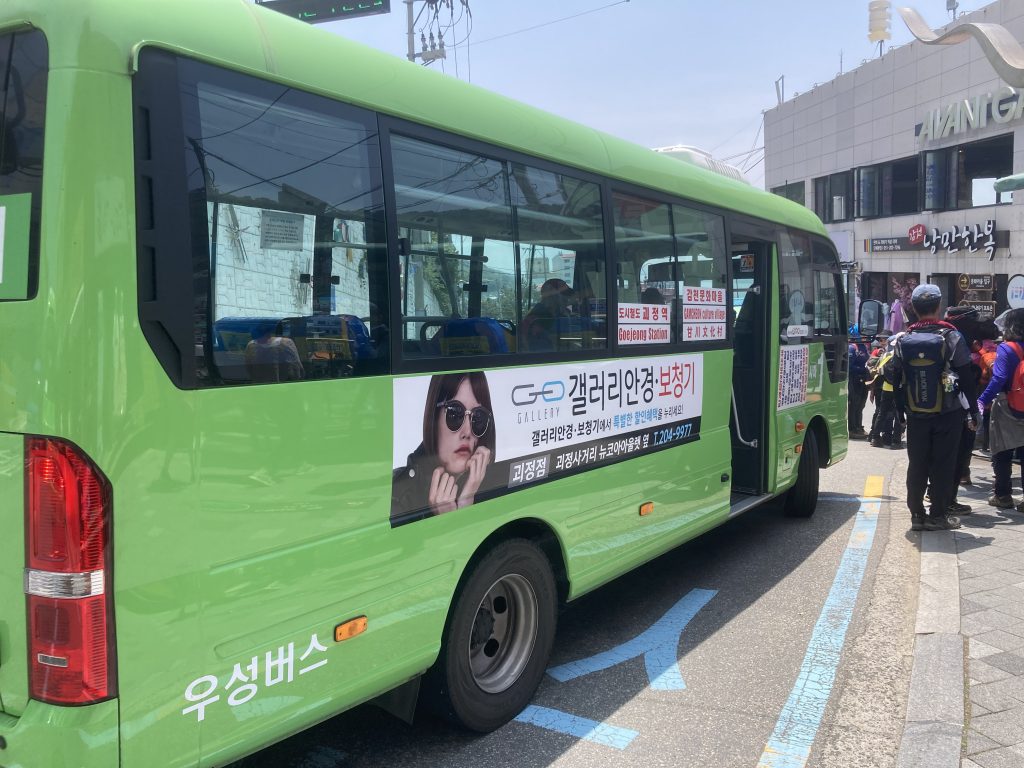
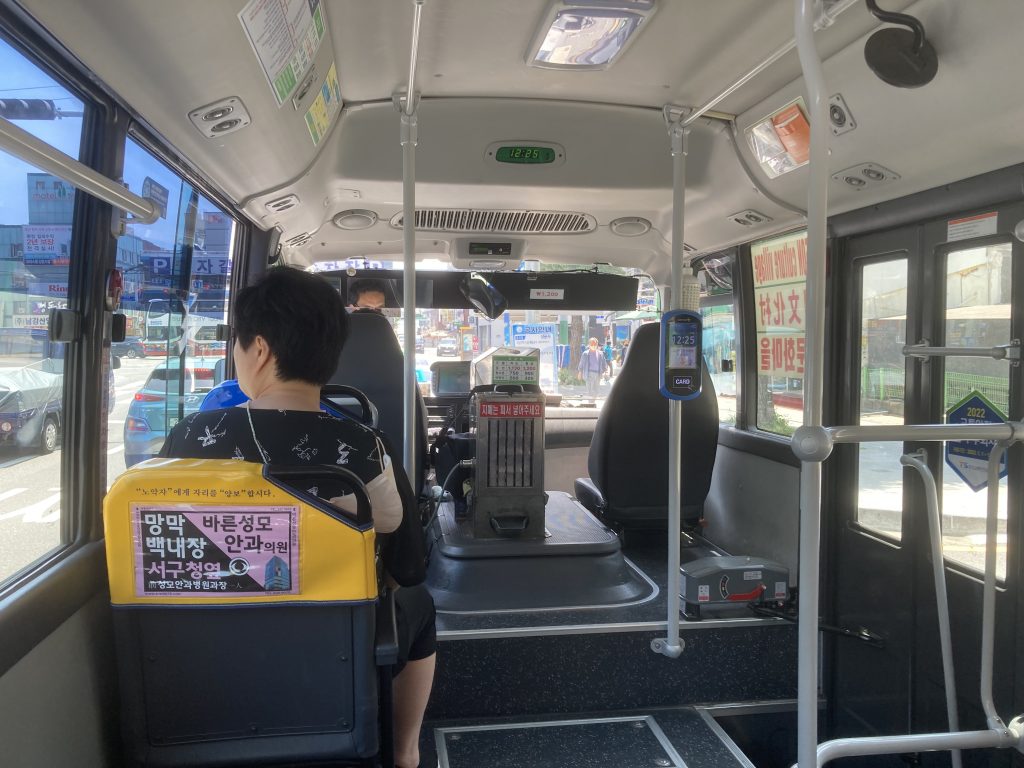
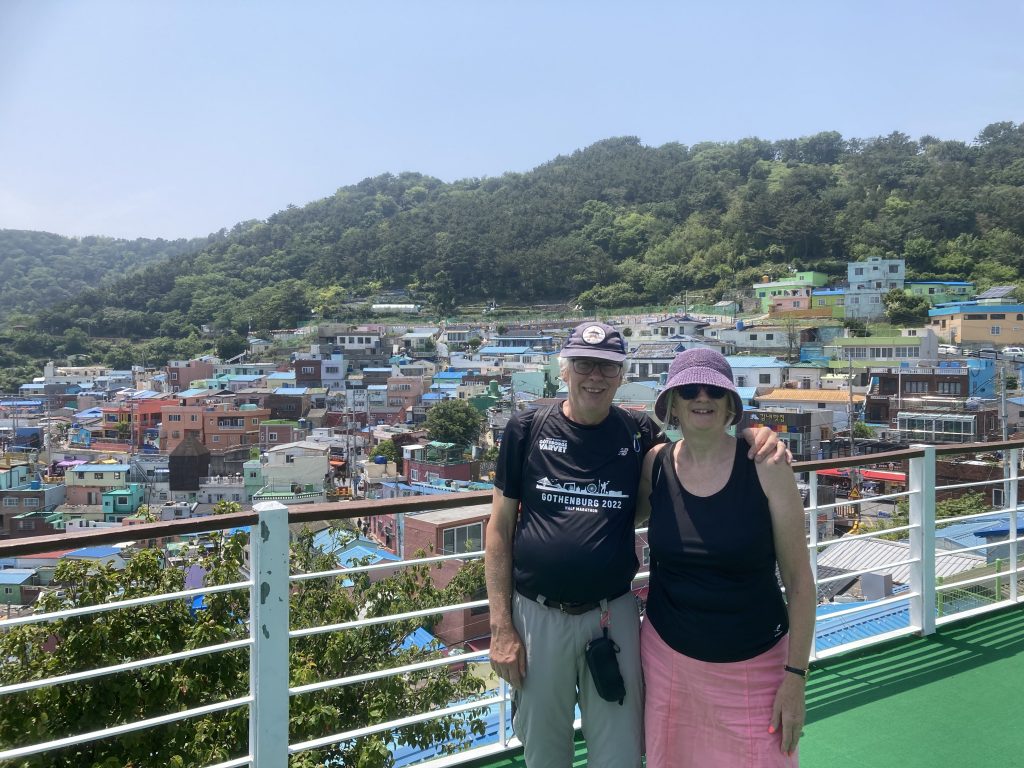
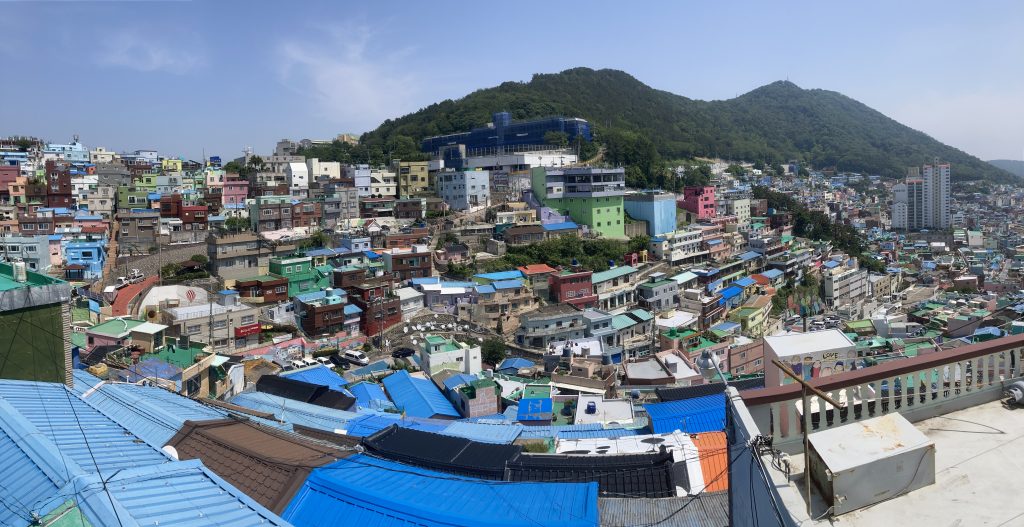
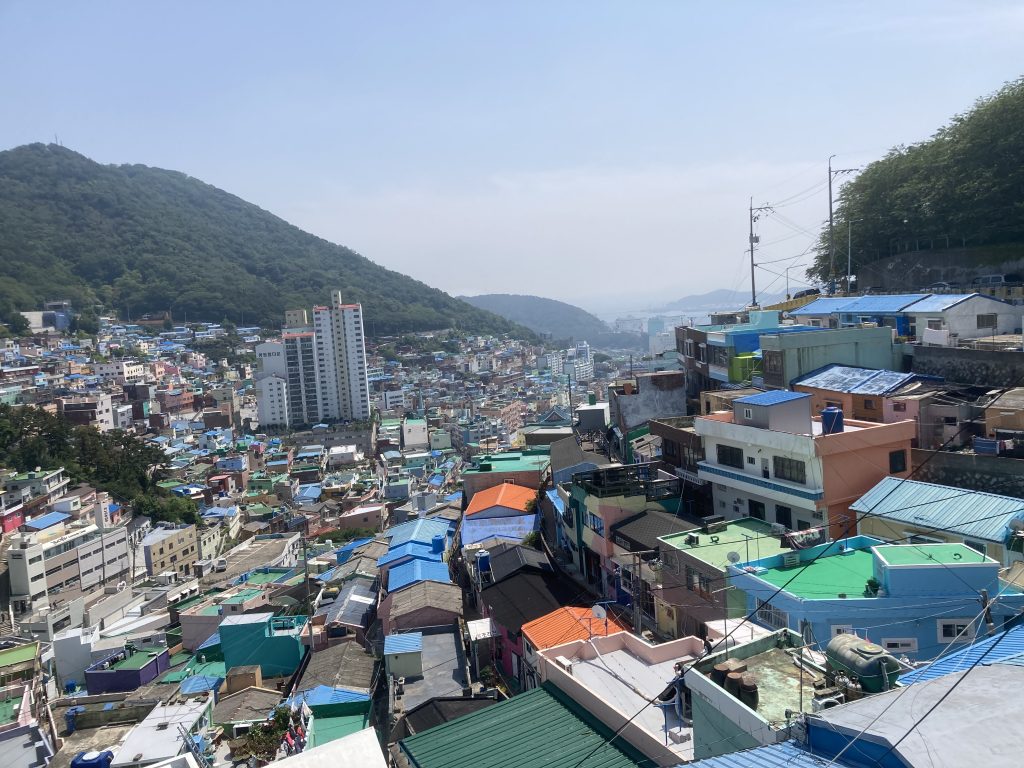
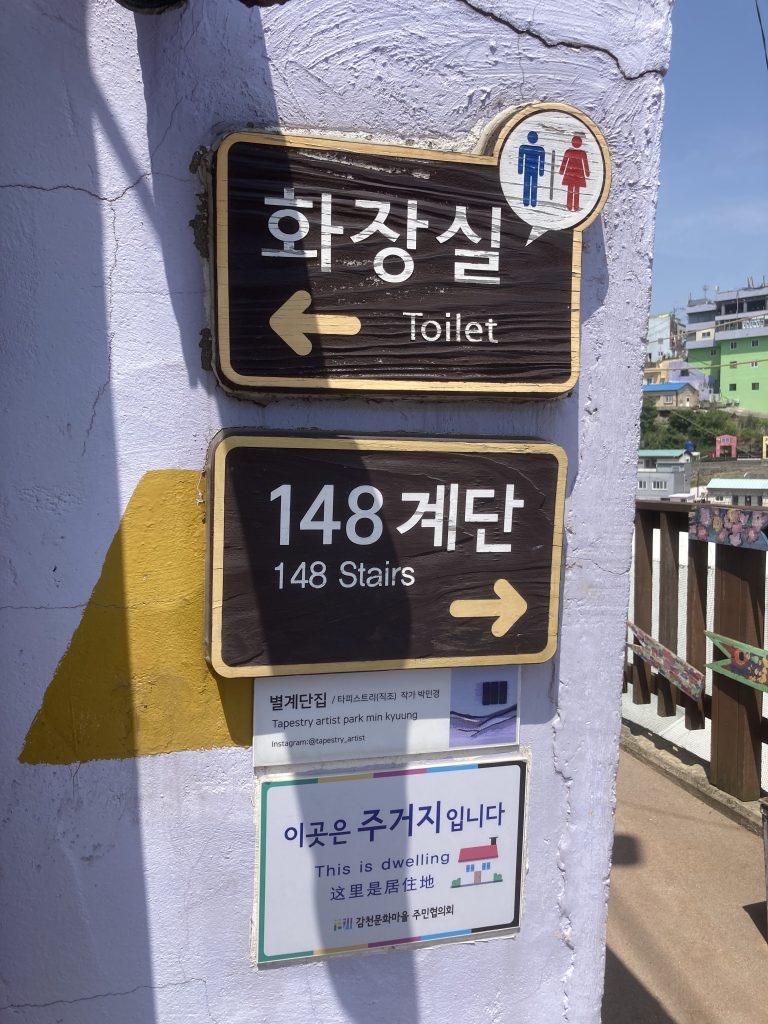
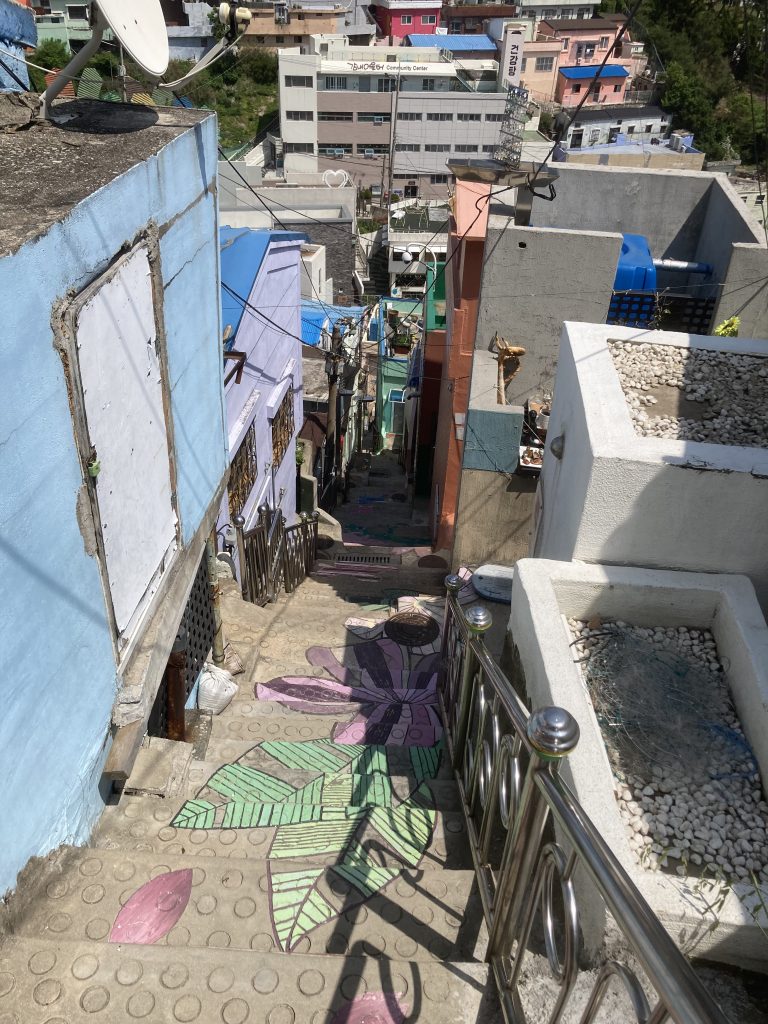
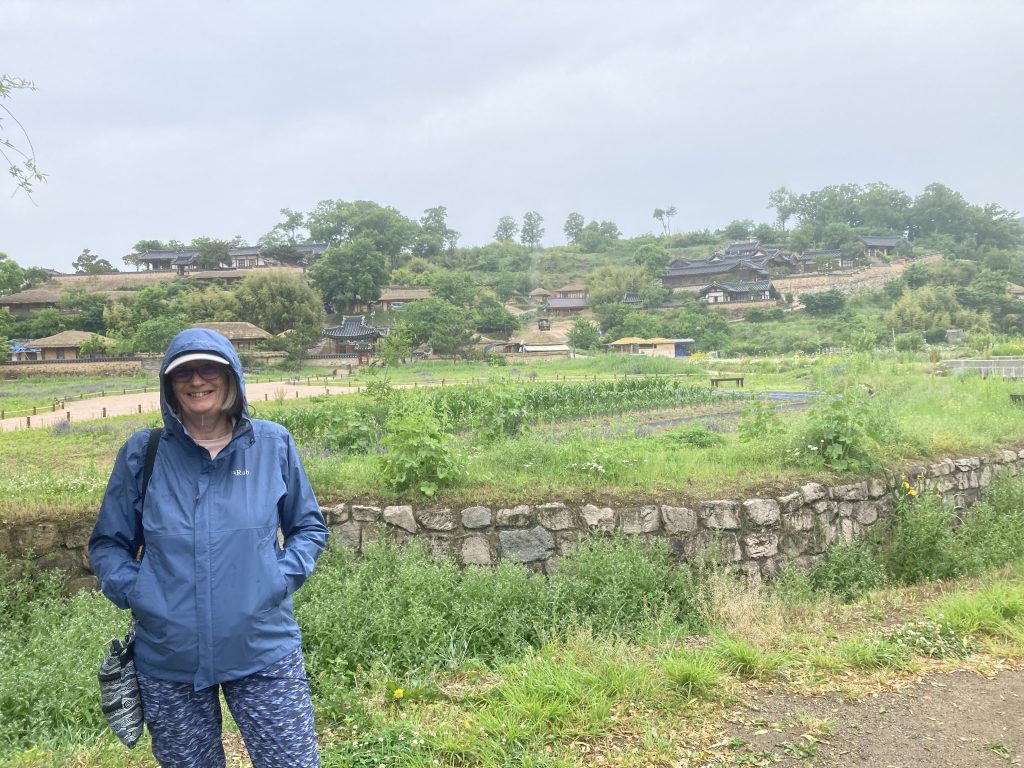
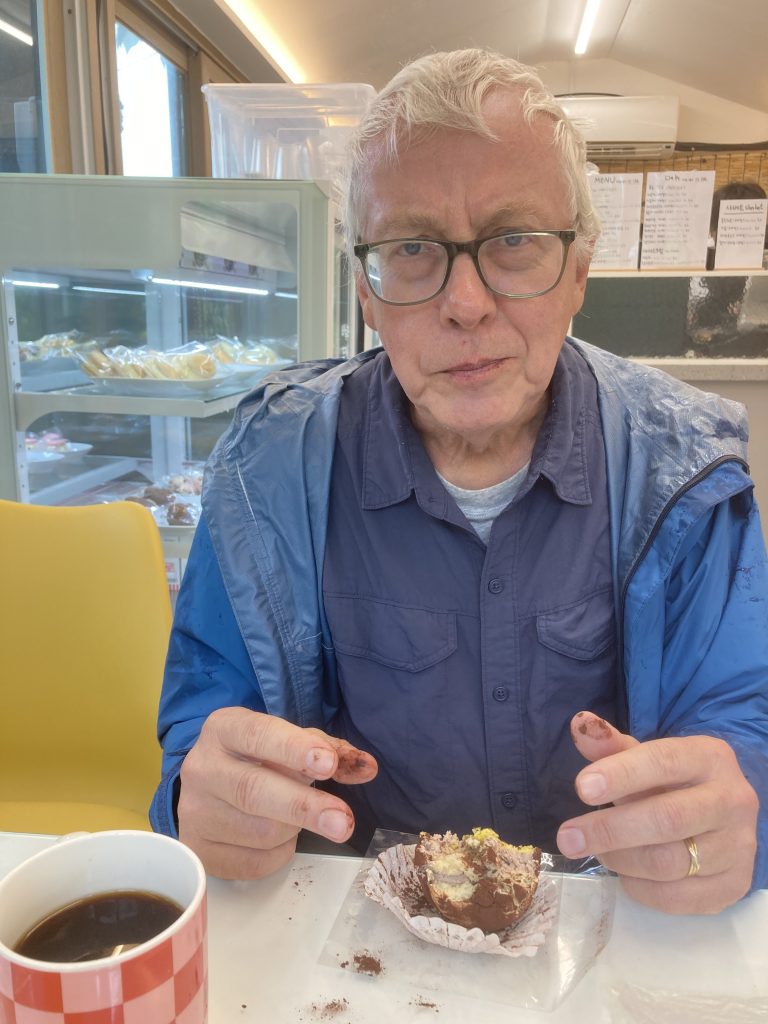
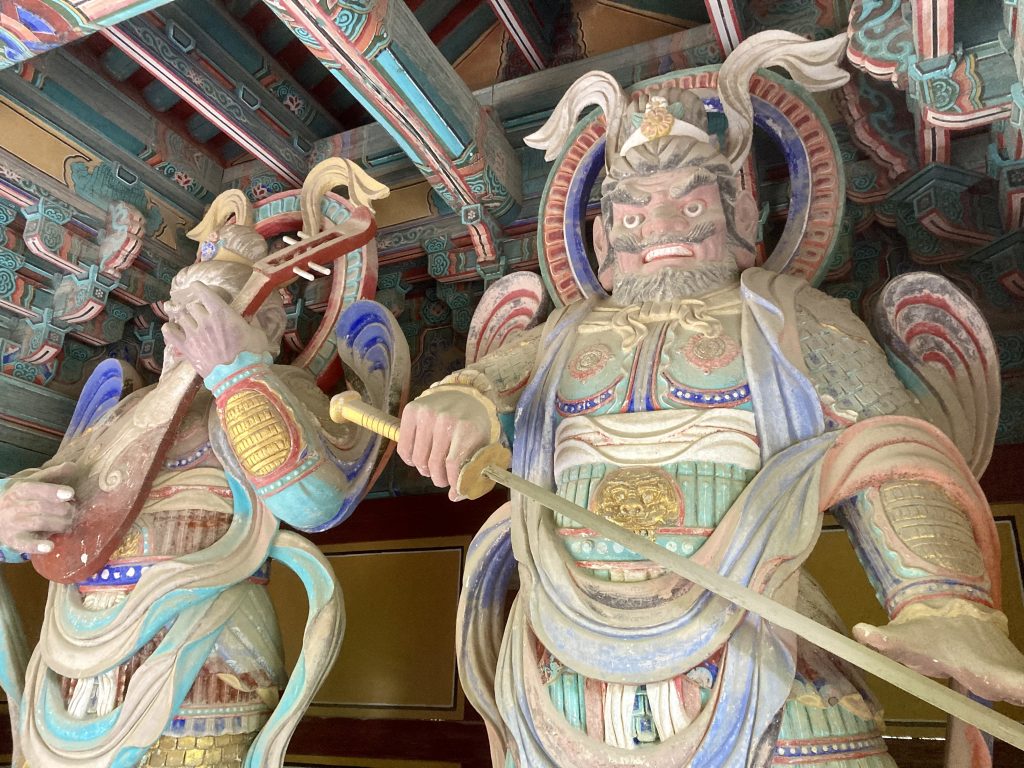
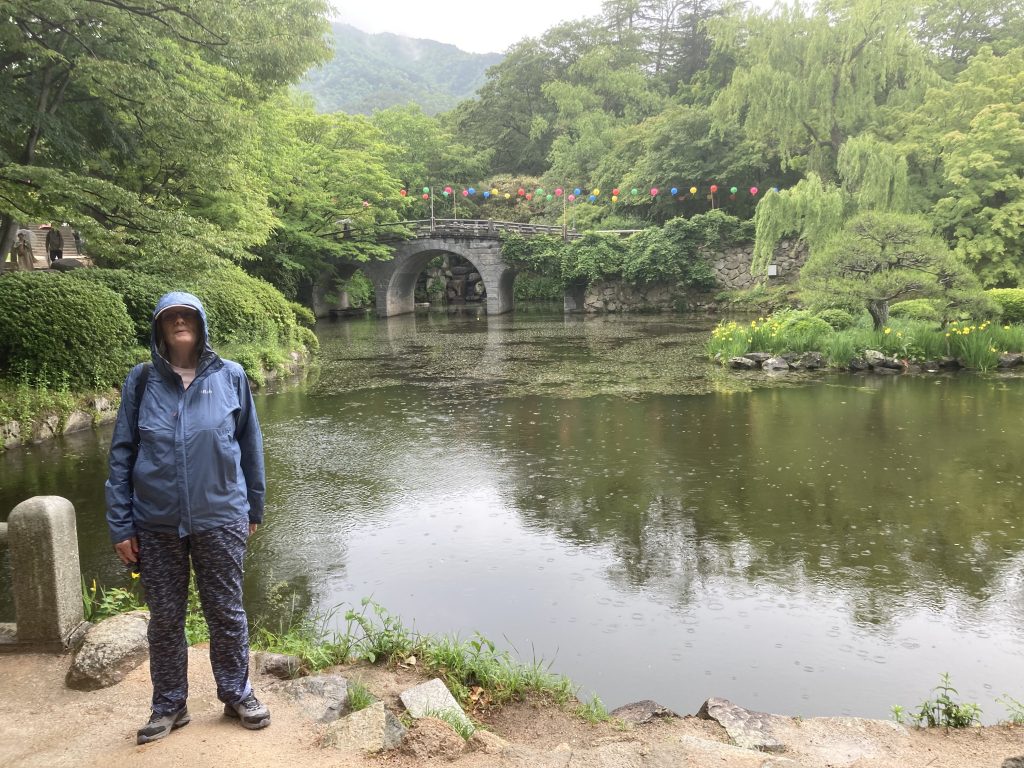
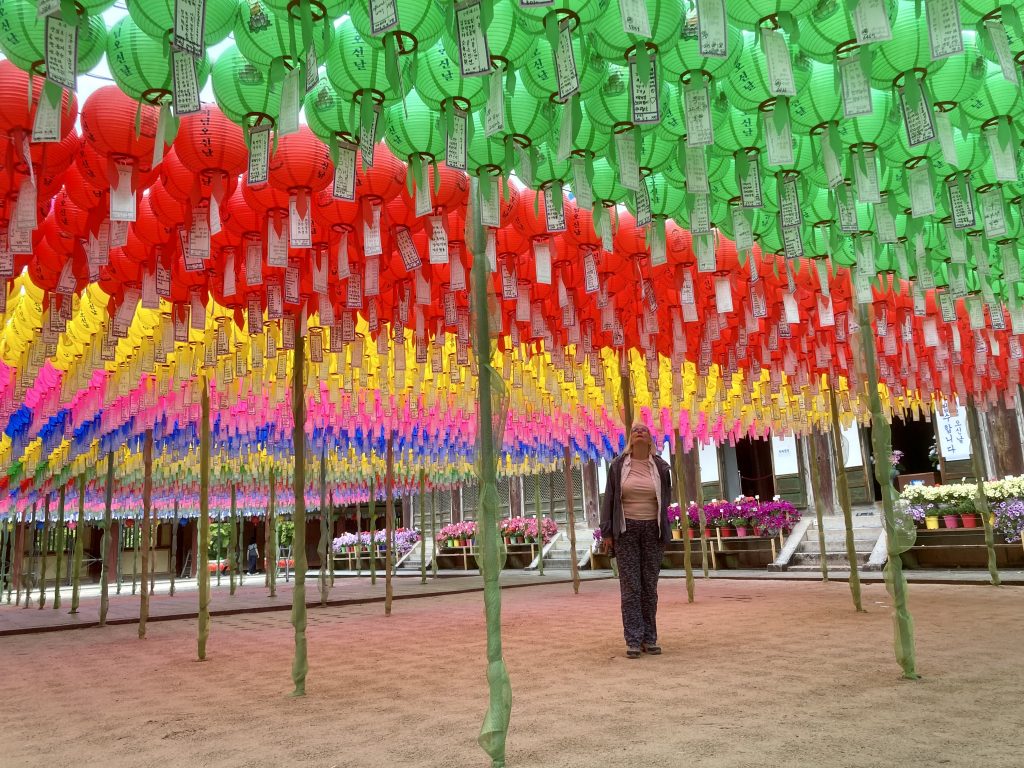
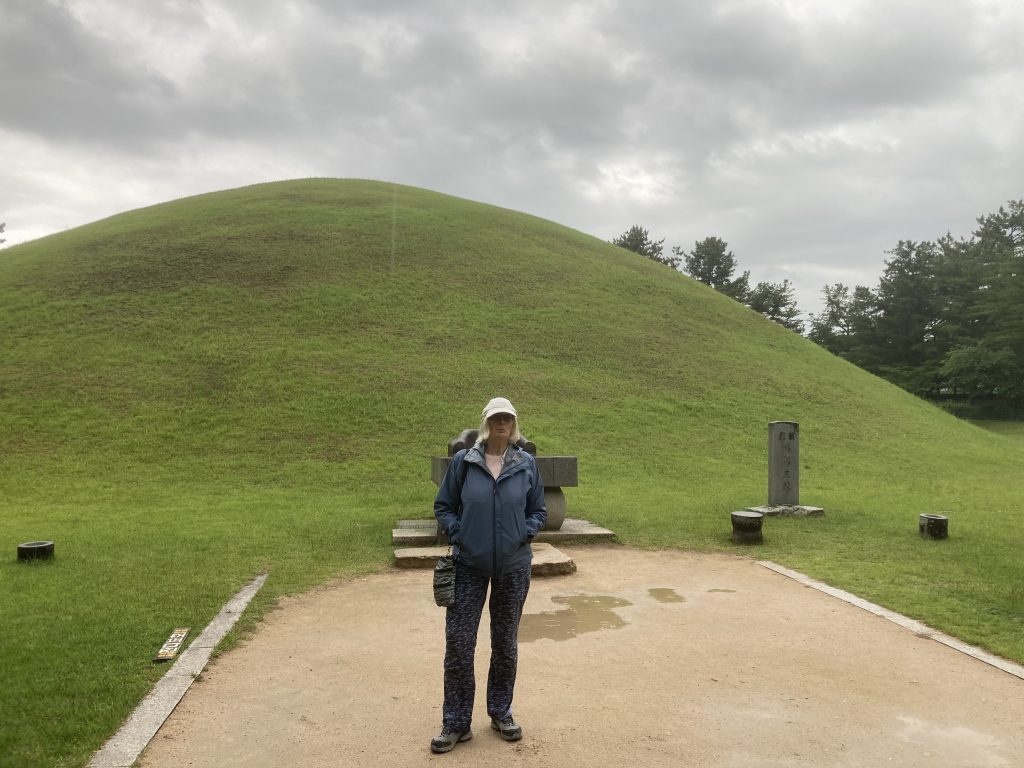
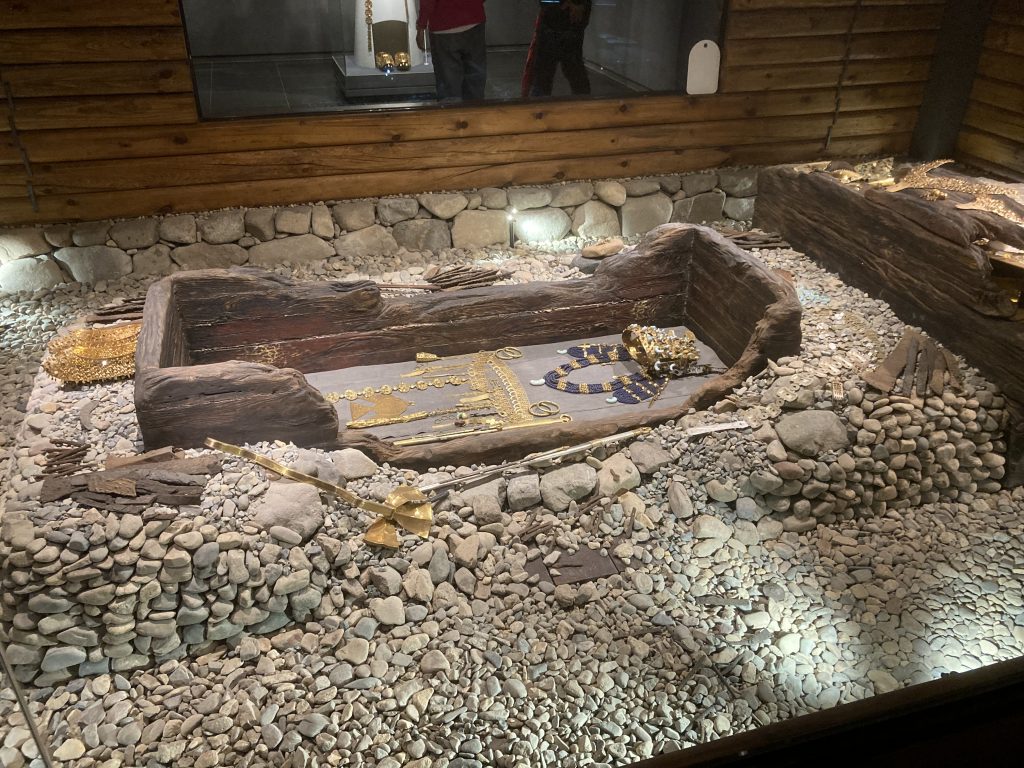
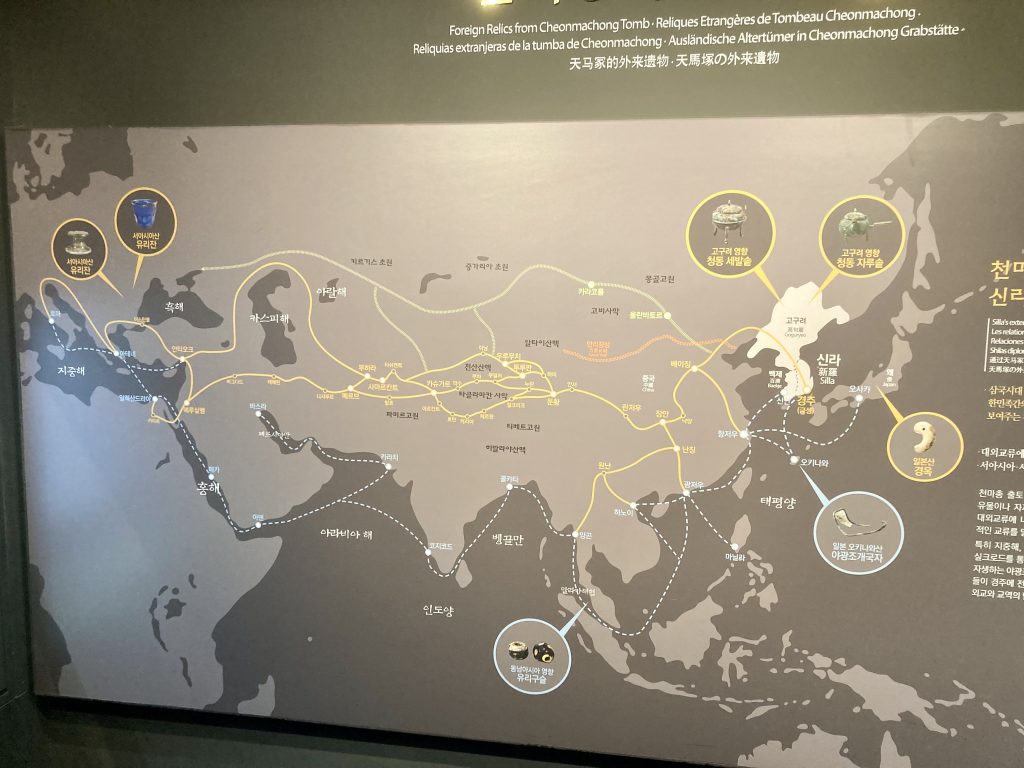
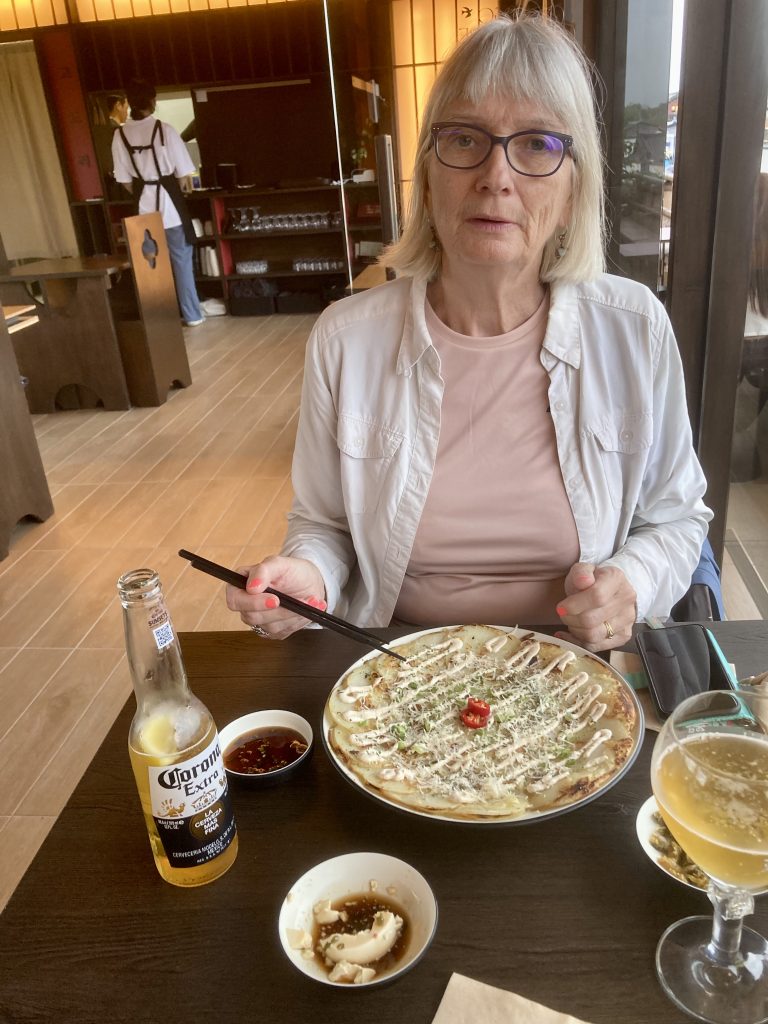
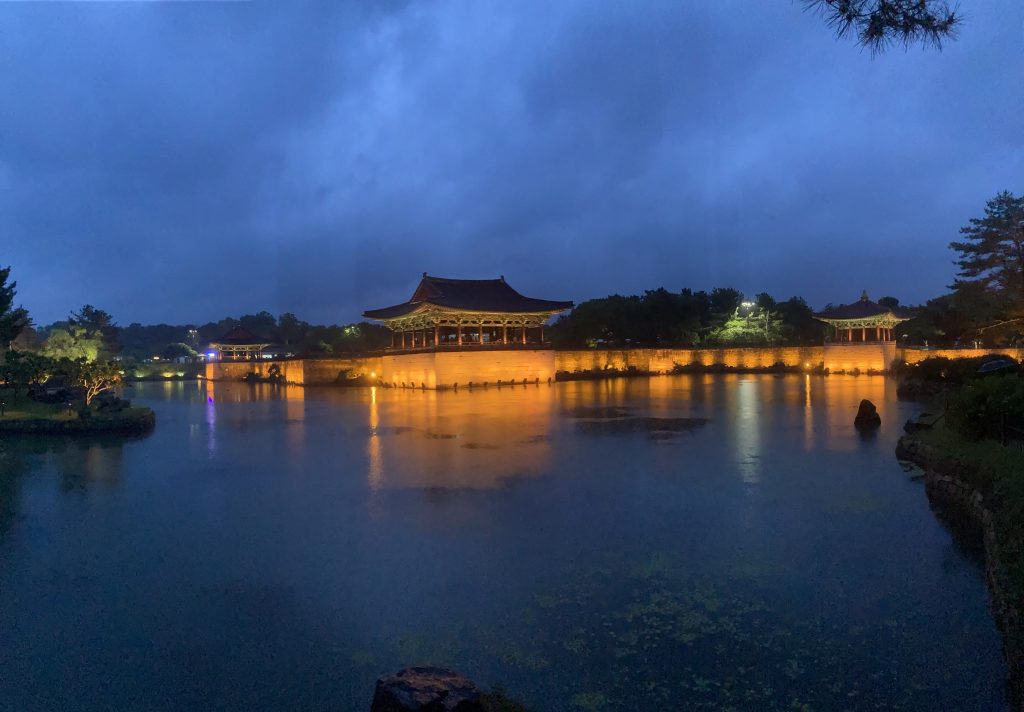
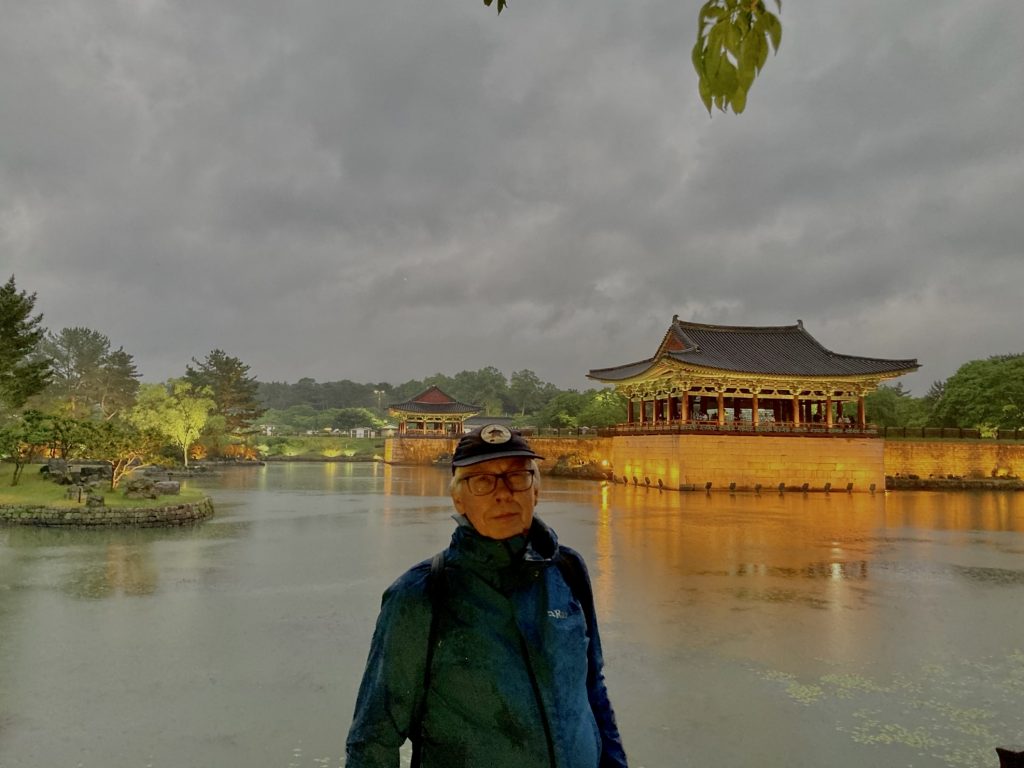
I am exhausted just reading about your exploits and I don’t like the look of that shellfish breakfast. Glad I am safely at home!
It wouldn’t be everyone’s cup of tea, for sure!
Kirsten was scandalised that we opted for a swanky French restaurant here in Yokohama, but it was full of locals enjoying something a bit different. For us it was like coming home.